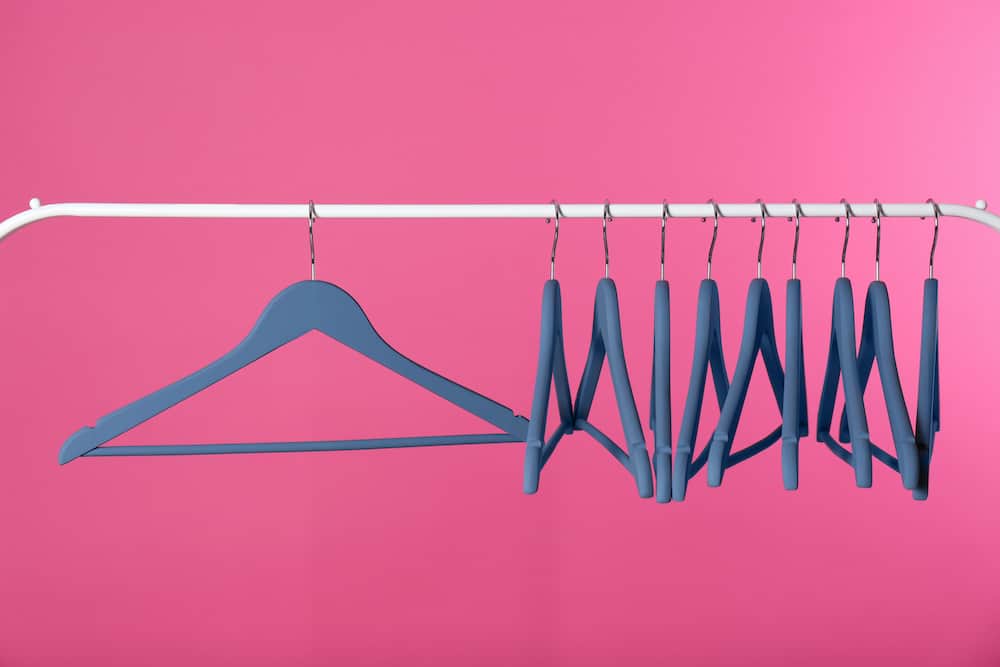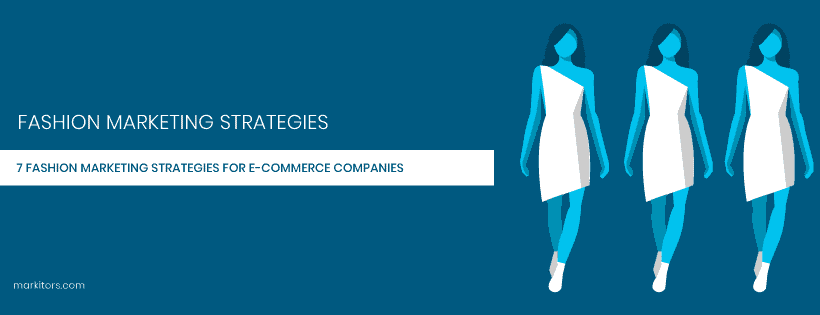
The fashion e-commerce industry is expected to grow from $481.2 billion in 2018 to $712.9 billion by 2022. The impact of COVID-19 will accelerate that growth, considering shoppers’ overall shift to online shopping, although with demand for more casual clothes.
Demand is great, but it can also be a double-edged sword for new brands entering the scene. So, how can you make your fashion brand stand out? The answer lies in creating a unique fashion marketing strategy.
Keep reading for fashion e-commerce marketing ideas and insights to take your business to the next level.
1. Optimize your website for search engines
Using search engine optimization (SEO) for any website is a fundamental must-have. Without a properly optimized website, customers won’t be able to find your brand by searching for your products. Ever wonder why you find particular clothing brands on Google’s first page of results for “sustainable yoga pants”? It’s no accident.
The most common source of fashion e-commerce traffic is direct, meaning customers already know your brand and will type in your website. But if you haven’t yet made a name for your unique fashion items, search traffic (from search engines like Google) is the next driver of traffic at 30%. Paid ads and social media come last and make up less than 10% combined.
Fashion e-commerce SEO starts with some basic optimization building blocks that you can tackle on any major e-commerce platform. Here are a few tips to get you started:
- Keyword research. What are your customers actually typing into search engines? Keyword research identifies those queries so you can match your messaging and increase visibility for the terms that matter.
- URLs. URLs may seem like a negligible detail, but in fact, they can help out your SEO and user experience. Would you be more comfortable clicking on and sharing a URL ending with “348723neiwc-2#” or “custom-gold-bracelet”?
- Meta titles and descriptions. These snippets show up in search engine result pages and describe to both customers and search engines what your page is about. They should describe your product with the necessary keyword, along with anything else that makes your fashion e-commerce store unique, like free shipping.
- Product and category descriptions. Unique descriptors are a huge factor in e-commerce, but especially for fashion, where customers rely on your words to buy items that they can’t try on. Each category and product page should have a few paragraph descriptor targeting specific keywords and product specs. This communicates to search engines what each page is about.
2. Start a blog to improve website traffic and build a community
This e-commerce fashion marketing strategy also uses the SEO basics discussed above to increase organic search traffic. A blog isn’t just to tell your story, news or company’s purpose. You can also leverage blog posts to target keywords related to your fashion niche that attract readers with the potential to turn into customers.
For example, these are some common topics that fashion brands from jewelry to shoes can write about:
- FAQs like “how do I measure my shirt size” or “silver vs. gold jewelry.”
- Product roundups that feature your top products in a particular category like “best beach sandals.”
- Cause-related topics like “taking care of your vegan leather handbag” or “sustainable fashion ideas.”
For instance, take Loopty Hoops’ blog that covers topics like “How to Put on Continuous Endless Hoops.” This blog comes up on Google’s first page for several variations of the keyword “how to put in endless hoop earrings.” Not only does it drive a ton of organic traffic to the jewelry shop, but it also captures an audience interested in your products.
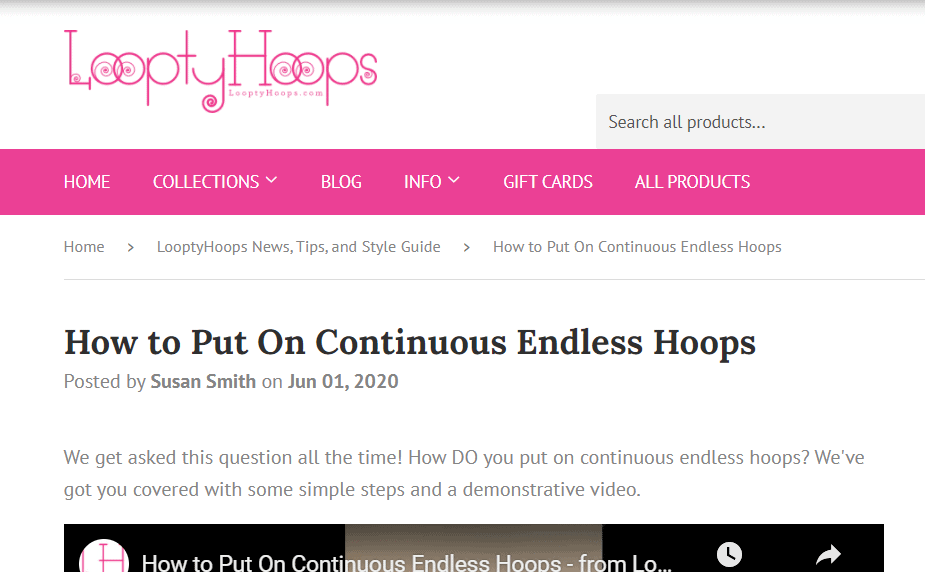 These blogs don’t have to directly promote your products, either. Consider them an avenue to attract customers throughout the buyer’s journey—from awareness to consideration to decision.
These blogs don’t have to directly promote your products, either. Consider them an avenue to attract customers throughout the buyer’s journey—from awareness to consideration to decision.
3. Support a good cause
Believe it or not, supporting a good cause can help your fashion brand. Talk about a win-win.
In fact, almost three-quarters of Americans take a company’s philanthropy and cause into consideration when making a purchase. Younger shoppers are especially more in tune with value-driven brands than older generations.
Even well-known luxury brands are taking note. Michael Kors recently started selling “Watch Hunger Stop” shirts and donate the profits to charity.
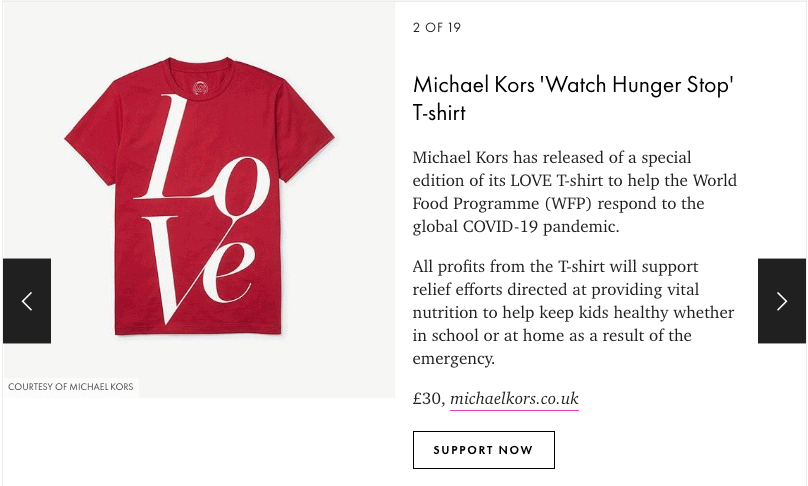
However, supporting a cause shouldn’t just be one of many fashion e-commerce marketing strategies. Customers are becoming increasingly savvy about false advertising and fake claims of charity or sustainability. For example, greenwashing is a tactic that exists across industries in which companies say something is sustainable without data or proof to back it up. When media and customers catch on to a pure marketing ploy, it could unravel your fashion brand.
4. Use social media micro-influencers to boost sales
Of course, any up-and-coming trendy online fashion label is most likely very familiar with micro-influencers on Instagram. Social media personalities with audiences of 1,000–100,000 can be affordable for even new entrants in the industry and help target niche audiences.
Micro-influencers have a 7x higher engagement rate on Instagram than the average for the mid-level, macro, and mega-influencers combined.
The up-and-coming clothing brand tentree manufactures and sells sustainably-made apparel to eco-conscious shoppers. They have an entire tentree ambassador program devoted to utilizing micro-influencers on social media to raise awareness about their products and tree planting initiatives. Ambassadors receive a number of exclusive perks, including discounts and social media features on tentree’s social channels.
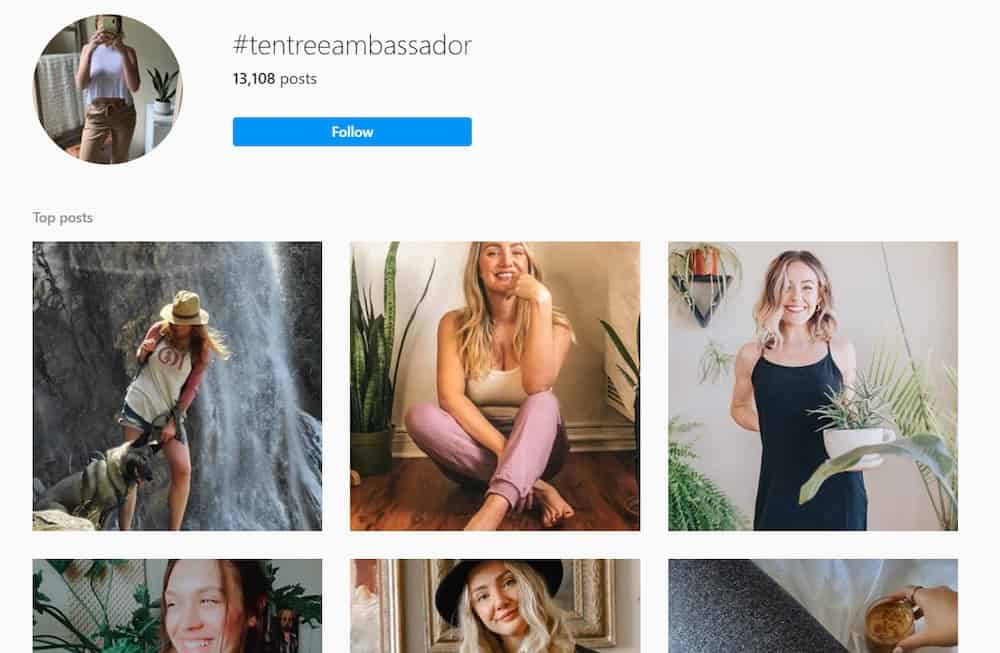 Starting small by contacting a few social media users who align with your brand can get the ball rolling and promote your fashion products in highly targeted markets.
Starting small by contacting a few social media users who align with your brand can get the ball rolling and promote your fashion products in highly targeted markets.
5. Encourage customers to leave reviews
Don’t be afraid to ask customers to leave reviews.
According to a recent study conducted at Guangdong University of Finance and Economics on global consumer reviews, over 70% of consumers trust purchase recommendations online. It helps build the legitimacy of your brand for new customers and gives a “first-hand” experience of a product.
While we all want to ensure that every customer has a 5-star experience, it’s not realistic to expect that every review will be positive. However, bad reviews aren’t always a deterrent to customers. In fact, a study found that a rating of 4.2 – 4.5 is actually more effective than 5-stars because it seems more realistic.
If you do receive bad reviews on your site, remember to always reply professionally, as this reflects how your brand handles customer service.
6. Share your insights and your story in online fashion publications
Traditional public relations is a helpful tool to spread the news of a new fashion brand with unique differentiators. However, digital PR makes the most sense for fashion e-commerce stores without a physical location. This fashion e-commerce marketing tactic is great to build brand awareness and spread your story. However, it also benefits SEO by having other websites link back to yours in mentions. This increases your website strength, improving overall search engine performance and rankings.
7. Incorporate email campaigns for abandoned carts and campaigns
About 70% of online shoppers abandon their shopping carts. Clothes products, especially, has the highest cart abandonment rate out of all e-commerce products.
To recapture these lost sales, you need to set up a cart abandonment email campaign that gently reminds shoppers of their lost opportunities. Some brands find it effective to include a small incentive to give an extra push, like a percentage off or free sample if they buy now. These campaigns can send a few days later with an additional email if the customer still does not purchase.
In addition, email campaigns to capture holiday shoppers can provide a huge boost in sales when shoppers are naturally more active online. According to the National Retail Foundation, holiday sales represent about 20 percent of annual retail sales each year. On top of that, one-third of shoppers report holiday weekend purchases are driven by promotions.
Set up sales campaigns for your most profitable products or offer overall promo codes that notify shoppers of deals for items they are already interested in.
Next steps to market your fashion e-commerce company
Fashion e-commerce marketing can be time-consuming. Save time and avoid common beginner missteps by partnering with a fashion e-commerce agency. We’ll help you compete with the big labels of the fashion industry with our expertly crafted strategies.
An experienced SEO agency works alongside you to ensure your fashion e-commerce marketing strategy is competitive and aligns with your long term goals. You’ll also receive technical SEO assistance to solve any site issues and optimize for peak performance.
To learn more, feel free to contact us, or try our free SEO audit.
Markitors is dedicated to helping small businesses thrive. We’ll help your website rank higher on Google to increase inbound leads and revenue. Explore what’s in our SEO toolbox: audits and keyword research, digital PR, technical SEO, and local SEO.

